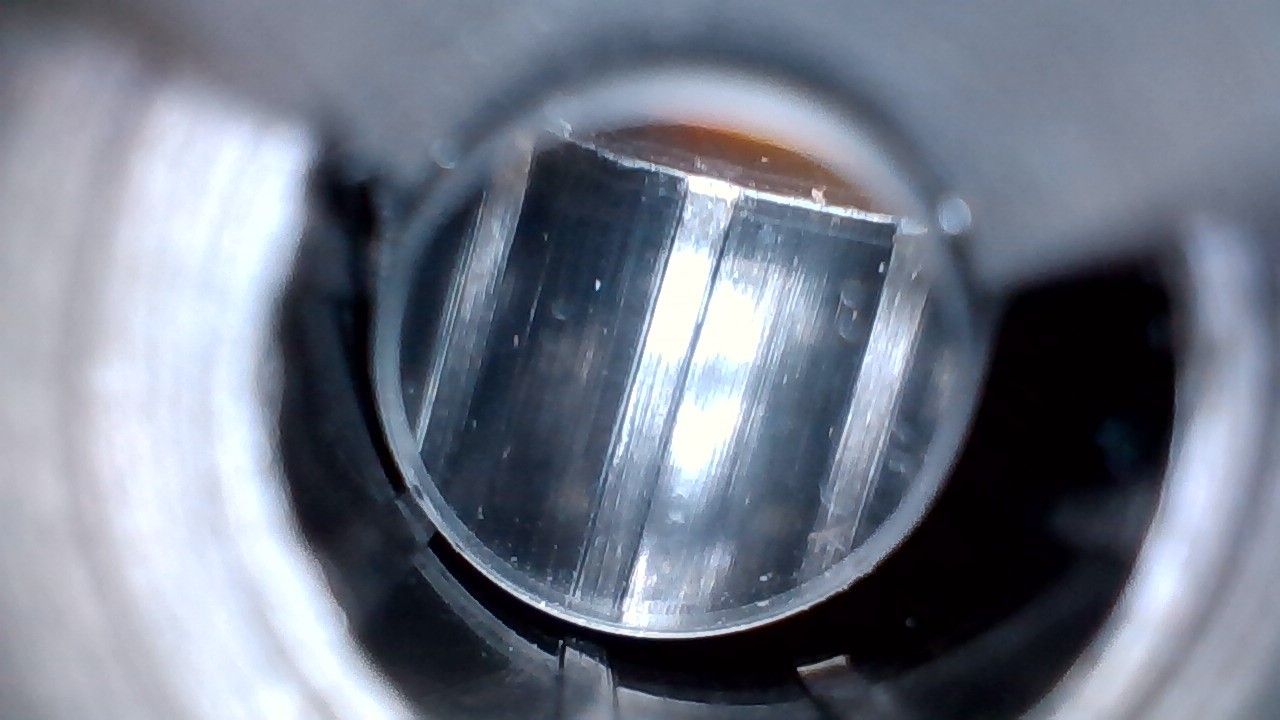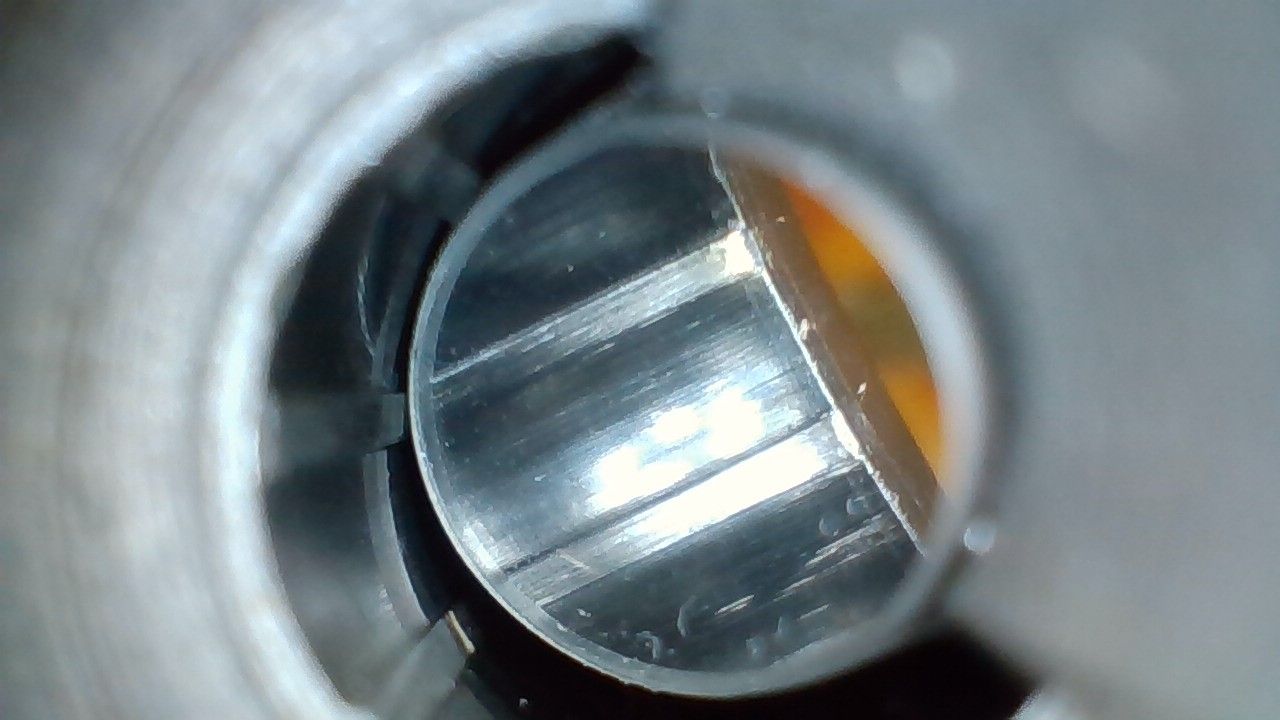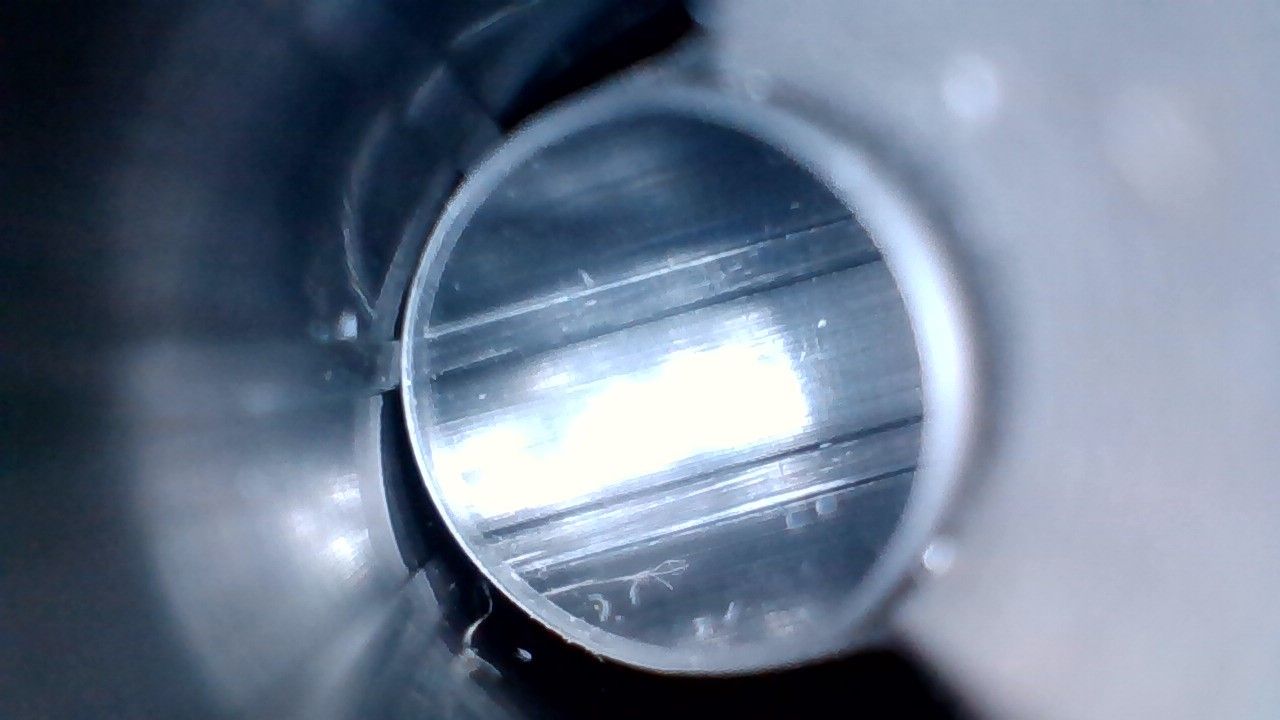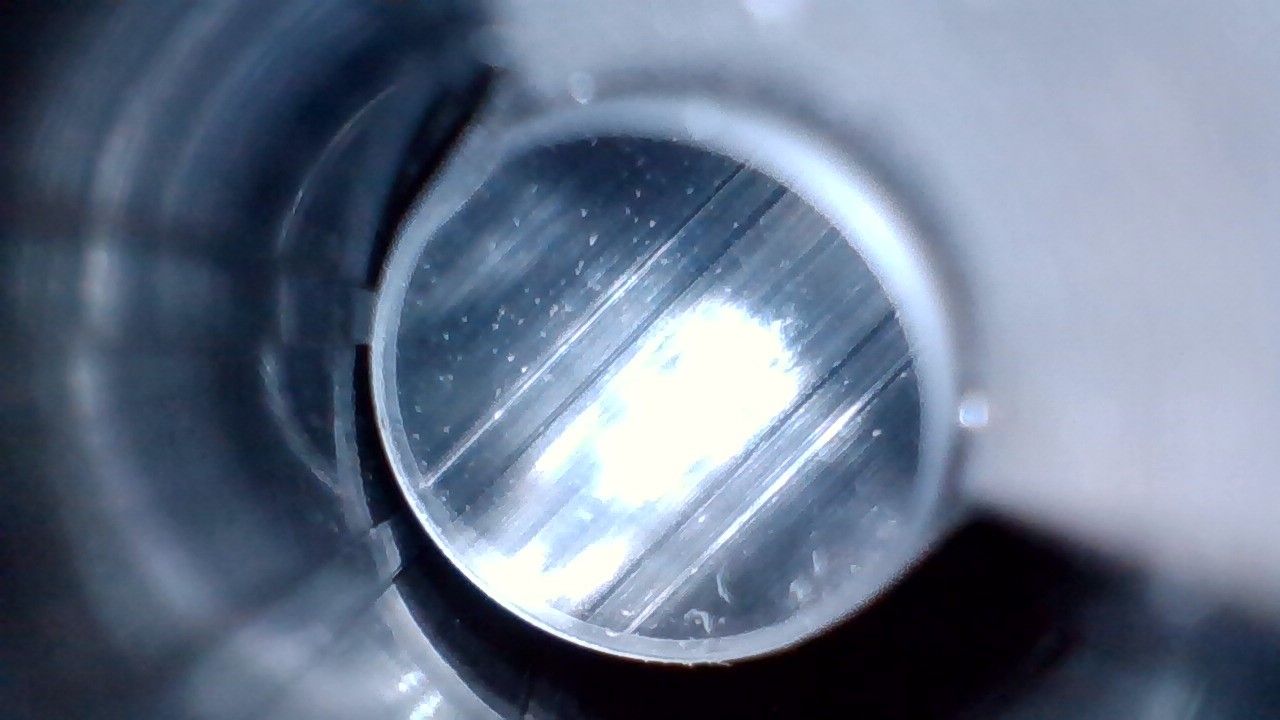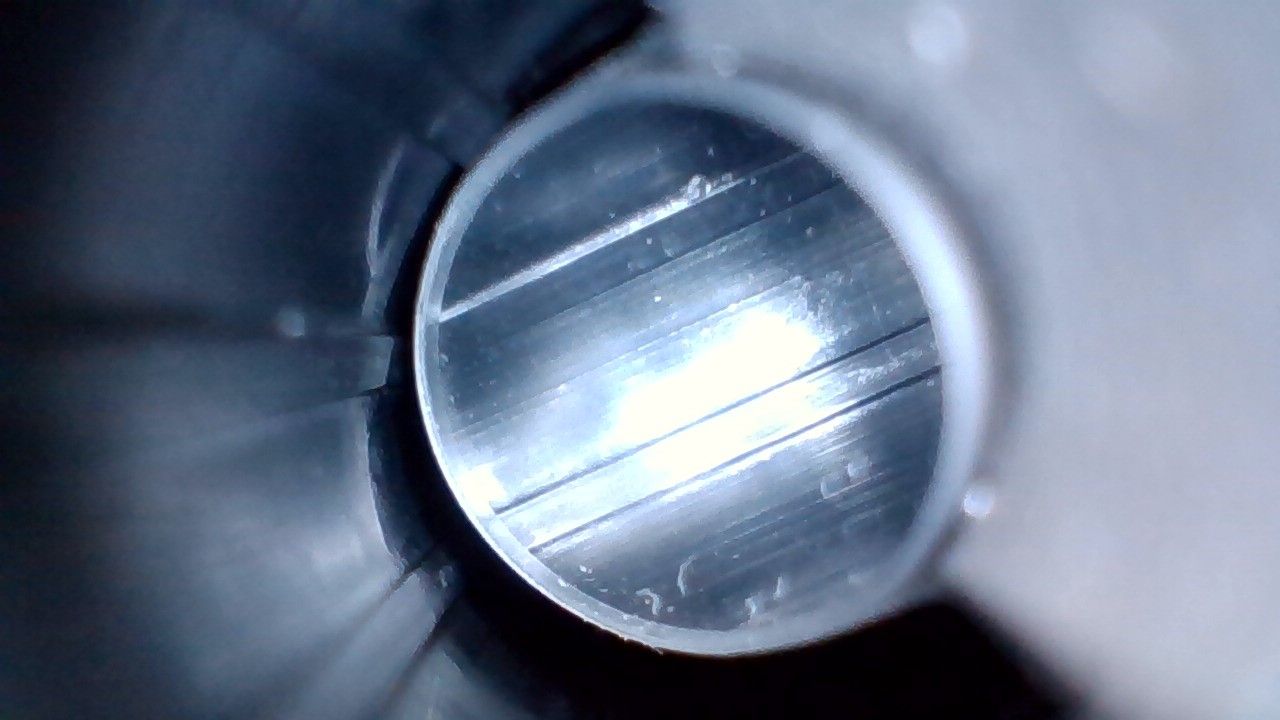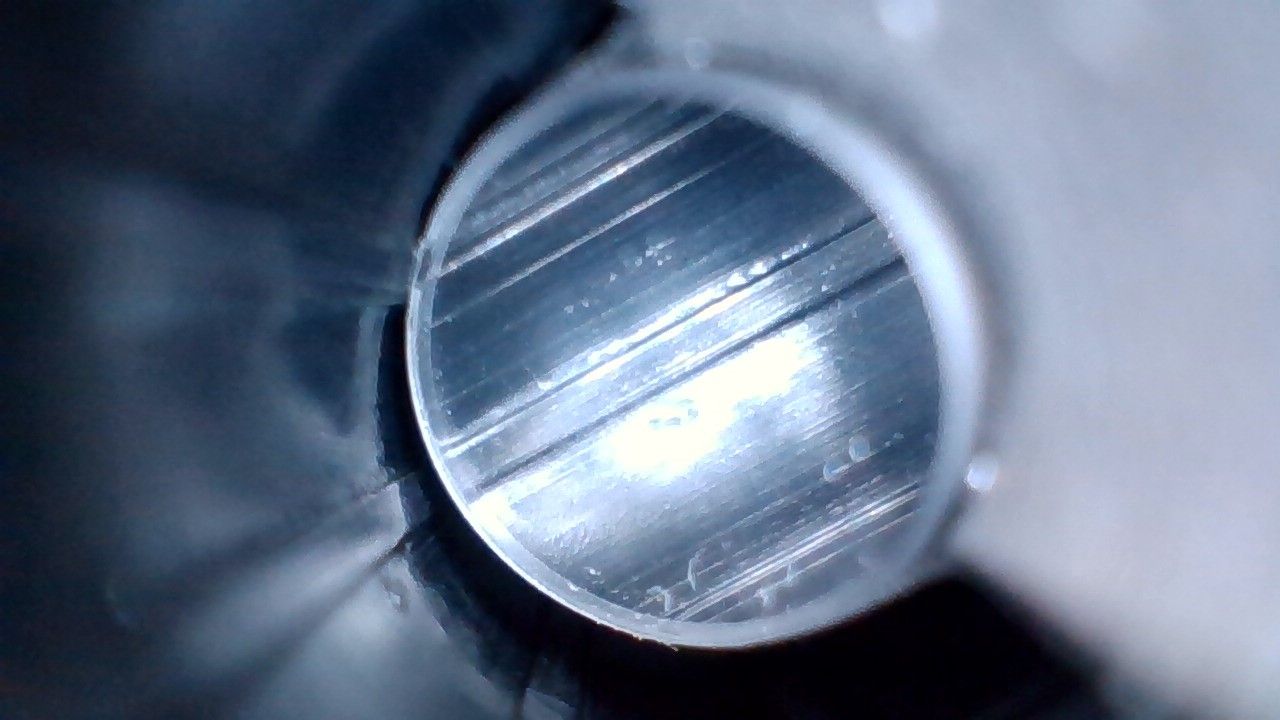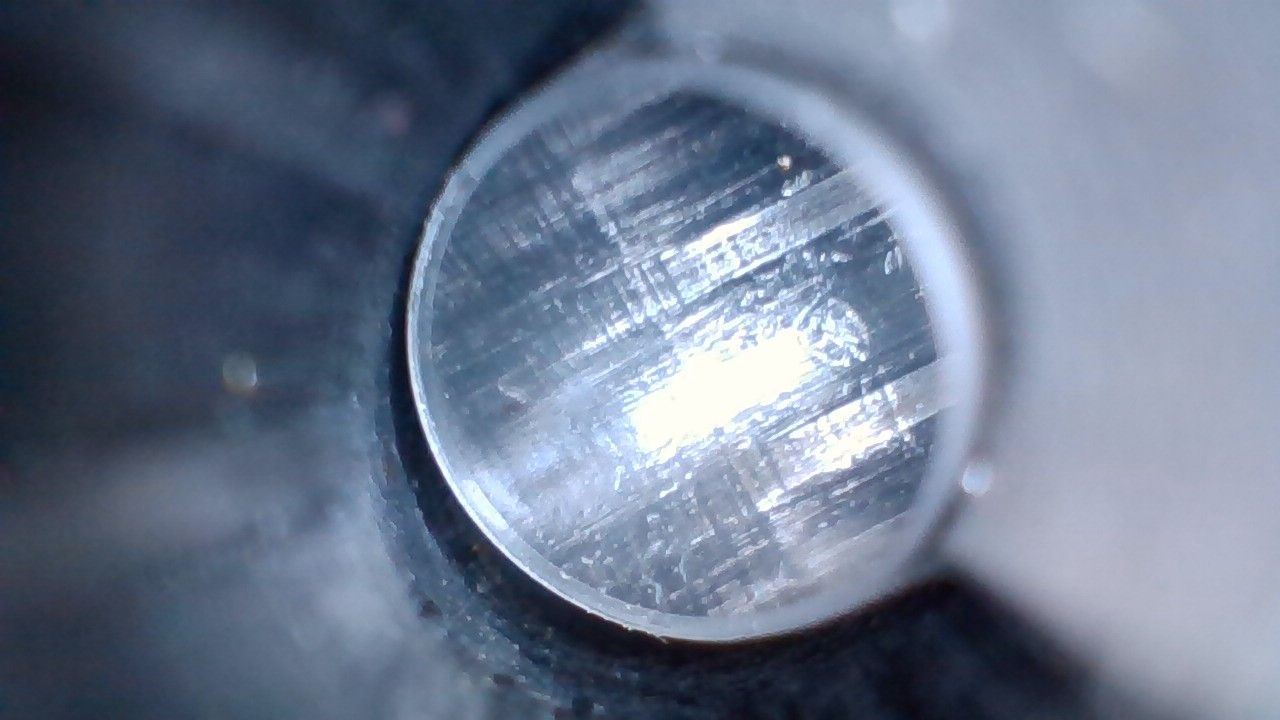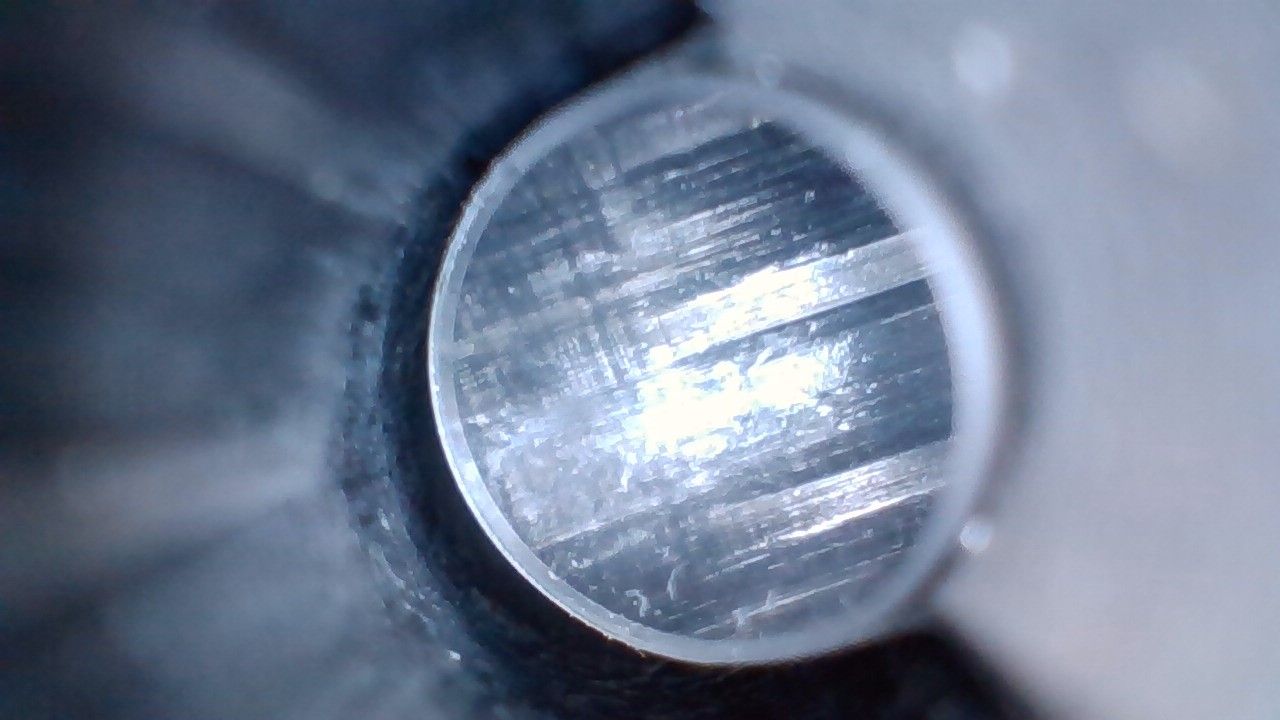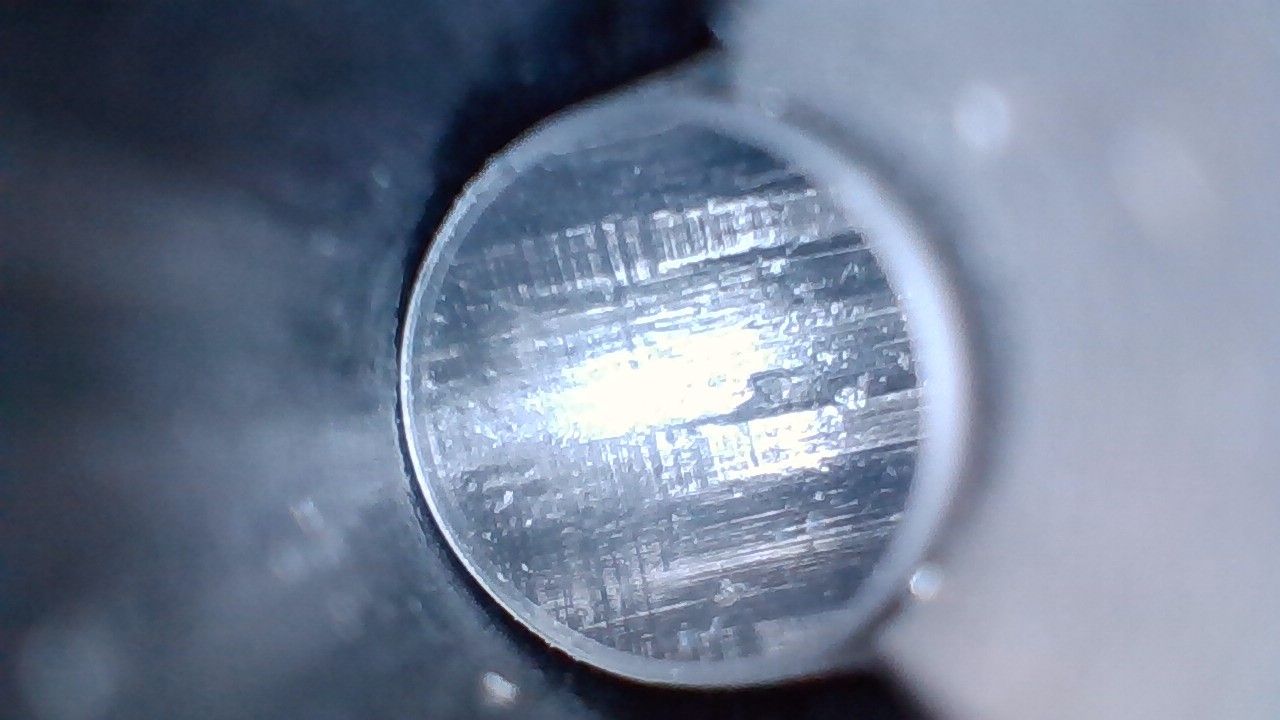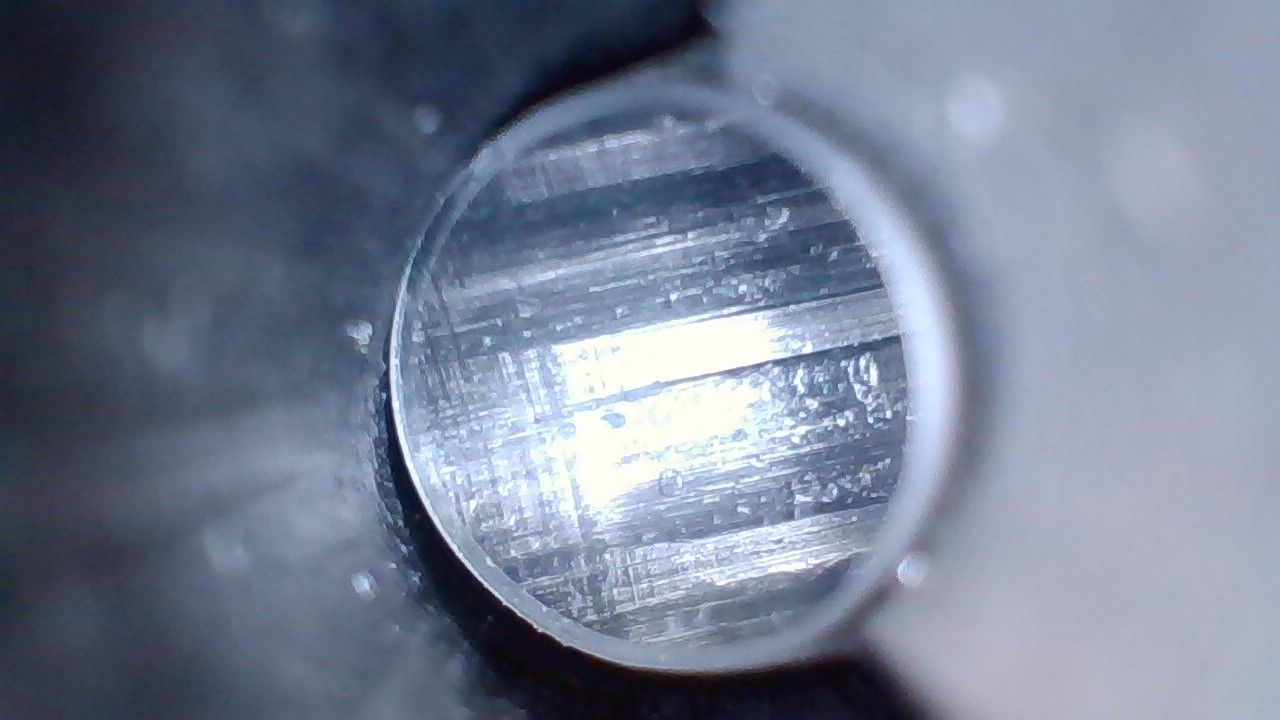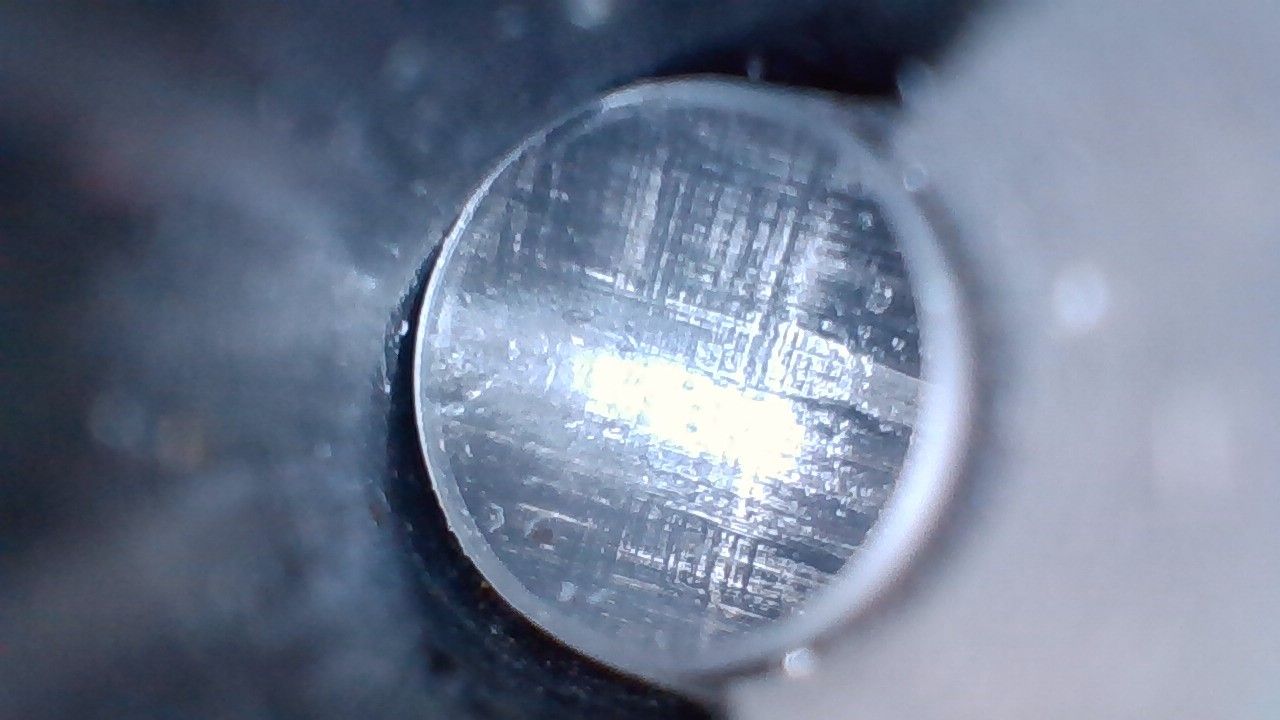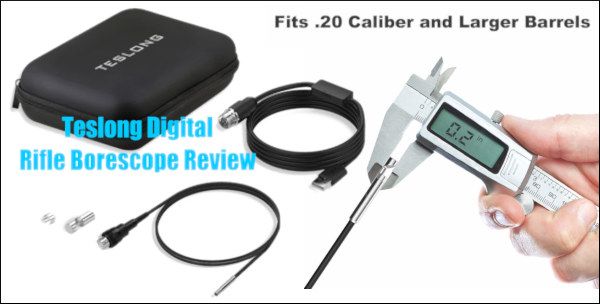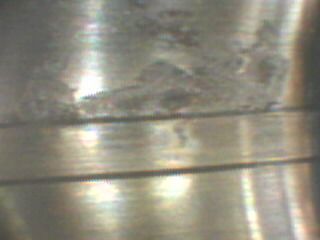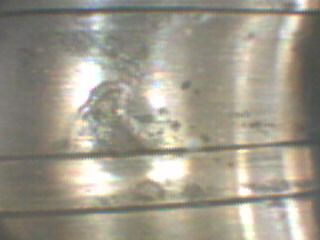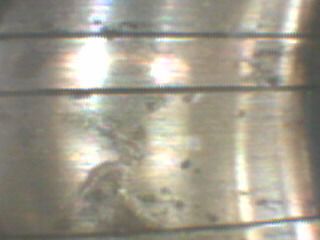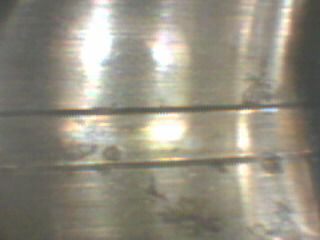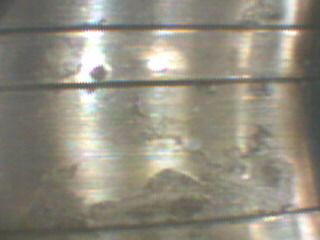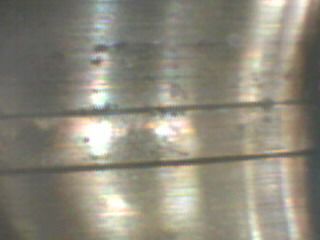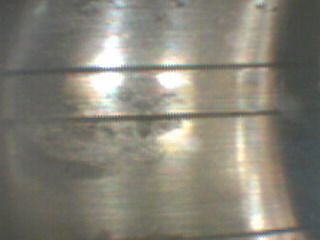Looking down a bore and seeing bright shiny metal and rifling doesn't reveal much that's useful about a .22 rimfire bore. I recently read about an inexpensive borescope, the Teslong NTG 100. It received positive words on a review AccurateShooter dot com so I thought I'd take a look at it. The total price was $66.99 tax included. I bought it from Amazon dot ca.
It has a side view camera on the end of a semi-rigid cable. It works with Windows, Mac, and Android smartphones. It has a camera on a cable that is .20" in diameter. It can be used with larger bores, but the non-rigid nature of the cable makes it able to turn more easily in a smaller bore than a larger one. The semi-rigid cable plugs into another cable that connects to a laptop. It comes in a flat cardboard box about 8.5"X8.5"X1".
The end that goes in the bore has a polished mirror to show the inside of the bore at 90 degrees.

The borescope uses LED lighting, the level of which can be adjusted with this wheel.

Below is the end that plugs into my computer. (I don't know how it might plug into a phone as I don't use one for anything but making calls.)

I plugged it into my laptop and was soon in business. For anyone wondering about the technical expertise needed to use this borescope, I will note that I'm not technologically savvy. I have a laptop computer for surfing the web, email, and storage of information. I can transfer pictures from my camera (don't use a cell phone camera) to my laptop and from there onto photo hosting sites. I don't use a cell phone except for phone calls and only rarely text with it.
It doesn't offer images that I'd describe as exceptional but it can provide a better appreciation of what the bore is like than can be achieved with the naked eye. Here are some pictures I took with the borescope (it takes video as well). Readers can judge the usefulness of the images for themselves.
Below are some images from the bore of an Anschutz that is almost 60 years old.



Some images from near the chamber, where the rifling begins.



My initial impression is that for $67 it's not bad. It's very easy to use and to see the inside of the bore. It takes pictures and video. It has a bit more glare than I'd like which may also be a reflection of a very clean, smooth bore. It's not as good as the Lyman Digital Borescope, which in turn is not as good as the Hawkeye models. But the price may make it a good value for many shooters who don't want to spend close to $400 on a Lyman or much more on a Hawkeye.
Apparently the borescope will be (or is) available in a rigid rod scope model and in a WiFi model as well. For more details and a review see h t t p://bulletin.accurateshooter.com/?s=teslong&submit=Search
It has a side view camera on the end of a semi-rigid cable. It works with Windows, Mac, and Android smartphones. It has a camera on a cable that is .20" in diameter. It can be used with larger bores, but the non-rigid nature of the cable makes it able to turn more easily in a smaller bore than a larger one. The semi-rigid cable plugs into another cable that connects to a laptop. It comes in a flat cardboard box about 8.5"X8.5"X1".
The end that goes in the bore has a polished mirror to show the inside of the bore at 90 degrees.

The borescope uses LED lighting, the level of which can be adjusted with this wheel.

Below is the end that plugs into my computer. (I don't know how it might plug into a phone as I don't use one for anything but making calls.)

I plugged it into my laptop and was soon in business. For anyone wondering about the technical expertise needed to use this borescope, I will note that I'm not technologically savvy. I have a laptop computer for surfing the web, email, and storage of information. I can transfer pictures from my camera (don't use a cell phone camera) to my laptop and from there onto photo hosting sites. I don't use a cell phone except for phone calls and only rarely text with it.
It doesn't offer images that I'd describe as exceptional but it can provide a better appreciation of what the bore is like than can be achieved with the naked eye. Here are some pictures I took with the borescope (it takes video as well). Readers can judge the usefulness of the images for themselves.
Below are some images from the bore of an Anschutz that is almost 60 years old.



Some images from near the chamber, where the rifling begins.



My initial impression is that for $67 it's not bad. It's very easy to use and to see the inside of the bore. It takes pictures and video. It has a bit more glare than I'd like which may also be a reflection of a very clean, smooth bore. It's not as good as the Lyman Digital Borescope, which in turn is not as good as the Hawkeye models. But the price may make it a good value for many shooters who don't want to spend close to $400 on a Lyman or much more on a Hawkeye.
Apparently the borescope will be (or is) available in a rigid rod scope model and in a WiFi model as well. For more details and a review see h t t p://bulletin.accurateshooter.com/?s=teslong&submit=Search

















































